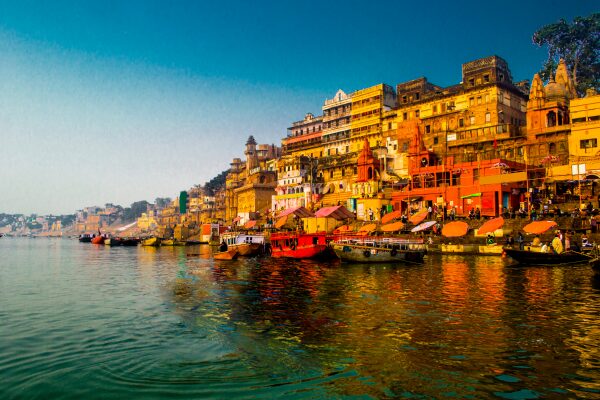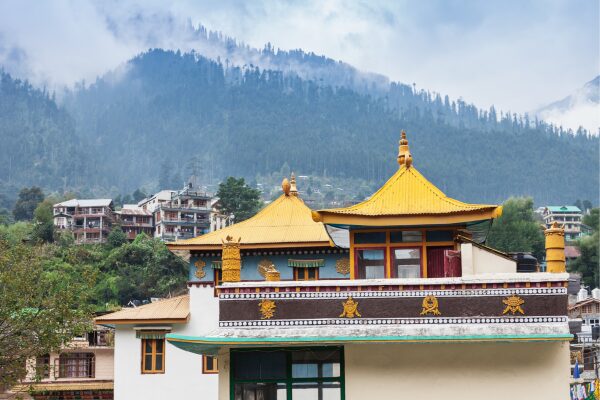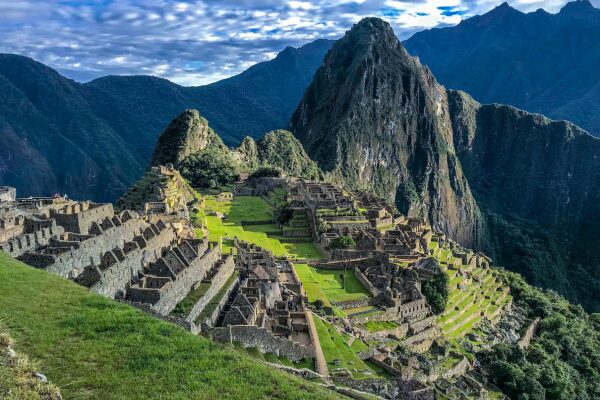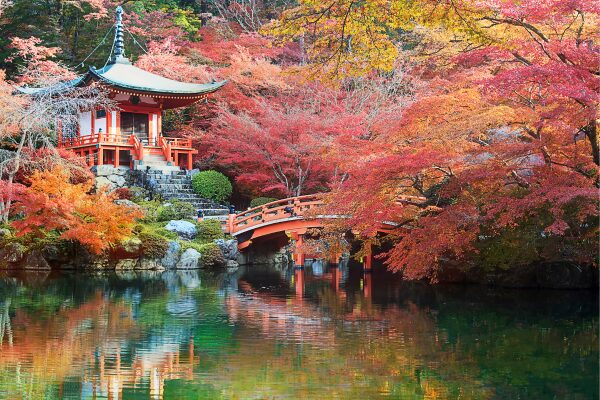In a world marked by hustle and bustle and incessant demands, spiritual journeys and divine connections emerge as beacons of hope and inner peace for many people.
These transcendent experiences not only offer a refreshing break from the hustle and bustle of everyday life, but they also have the potential to completely reshape our perspectives, providing deep and lasting insights into life and the universe.
Today, more than ever, current generations are immersed in a whirlwind of information, opportunities, and challenges. In this context, the search for meaning emerges as a fundamental need for many. Younger generations, in particular, appear to be increasingly interested in exploring questions related to life purpose, personal identity, interpersonal connections, and spirituality.
Living in an era marked by digital connectivity and globalization, people are exposed to diverse cultures, ideas, and beliefs like never before. This unprecedented access to information can both inspire and overwhelm, leading many to question their own beliefs and values in search of something more authentic and meaningful.
Furthermore, younger generations have grown up in a world where personal fulfillment and happiness are often highlighted as supreme goals. However, many find that achieving these goals through material achievements or external success is not enough to fill a deeper inner void.
In this context, the search for meaning often becomes a spiritual journey, where individuals seek deeper connections with themselves, others, and something greater than themselves. This quest can manifest itself in many ways, from meditative and contemplative practices to engaging in altruistic activities and exploring spiritual philosophies.
In short, today’s generations’ search for meaning is a multifaceted and complex journey, influenced by a variety of cultural, social, and personal factors. Yet this quest reflects a universal aspiration for a life of purpose and meaning, a quest that continues to propel many toward exploration of the spiritual and transcendental.
The Path to Enlightenment in Varanasi, India:

Varanasi, with its ancient history and unique spiritual aura, is revered as one of the oldest and holiest cities in the world. Every street, every alley, breathes spirituality, providing visitors with a palpable feeling of being immersed in something bigger than themselves.
On the banks of the majestic River Ganges, Varanasi comes to life with a multitude of sacred rituals and ceremonies that take place daily. From the early hours of the morning until sunset, pilgrims and local residents gather to perform practices such as puja, where they offer flowers, incense and prayers to the sacred river, seeking spiritual purification and divine blessings.
The accounts of pilgrims and travelers who visit Varanasi are moving testimonies of transcendental encounters and deeply impactful spiritual experiences. Many describe moments of spiritual clarity and connection with the divine, while others share stories of healing and inner transformation as they immerse themselves in the spiritually charged atmosphere of this sacred city. These accounts echo through the ages, inspiring new spiritual seekers to embark on their own journey of enlightenment in Varanasi.
The Serenity of Tibetan Monasteries:

Tibet is a place steeped in a rich spiritual culture dating back millennia. Their religious tradition, strongly influenced by Tibetan Buddhism, permeates all aspects of Tibetan life, from daily rituals to major festivities.
One of the most striking aspects of this spiritual culture are the isolated monasteries in the high Tibetan mountains. These ancient shrines serve as havens of serenity, where dedicated monks practice meditation and contemplation in search of enlightenment. Away from the hustle and bustle of the modern world, these monasteries offer a conducive environment for spiritual development and deep introspection.
In Tibetan monasteries, visitors are exposed to a wealth of Buddhist teachings and philosophies that inspire the search for inner peace and understanding the nature of the human mind. From compassion to impermanence, these teachings resonate with spiritual seekers, inviting them to explore the mysteries of existence and cultivate a calm, clear mind. By experiencing the tranquil atmosphere and profound teachings of Tibetan monasteries, visitors are invited to delve into their own spiritual journey in search of ultimate truth.
Here are some examples of monasteries in Tibet that are known for their beauty, history and serenity, and which are frequently visited by pilgrims and tourists seeking unique spiritual experiences:
- Jokhang Monastery (Lhasa): Located in the heart of the holy city of Lhasa, Jokhang Monastery is one of the most important and revered in Tibet. Built in the 7th century, it is a UNESCO World Heritage Site and is home to one of the most revered images of Buddha in the Tibetan Buddhist world.
- Sera Monastery (Lhasa): Known for its philosophical debates among monks, Sera Monastery is an important monastic institution in Tibet. Its traditional architecture and stunning landscapes attract visitors from all over the world.
- Ganden Monastery (Dagzê District): Founded in the 15th century, Ganden Monastery is one of the three main Gelugpa monasteries, one of the main schools of Tibetan Buddhism. Located about 40 km from Lhasa, it offers stunning panoramic views of the surrounding mountains.
- Tashilhunpo Monastery (Shigatse): Located in the city of Shigatse, Tashilhunpo Monastery is home to the Panchen Lama, the second highest spiritual leader in Tibetan Buddhism, after the Dalai Lama. Its impressive structures and rich history make it a popular destination for travelers.
- Rongbuk Monastery (Tingri County): This is the highest monastery in the world, situated at an altitude of over 5,000 meters, close to Mount Everest. In addition to its spectacular location, it is a common starting point for Everest expeditions and offers unparalleled views of the world’s highest mountain.
These monasteries offer visitors the opportunity to immerse themselves in the spiritual culture of Tibet, explore beautiful architecture, participate in religious ceremonies, and, of course, find peace and tranquility in a sacred environment.
Spiritual Rebirth in Machu Picchu, Peru:

Machu Picchu, the ancient Inca city nestled in the majestic mountains of the Peruvian Andes, is much more than just an archaeological site. With its fascinating history and enigmatic setting, Machu Picchu is a living testament to the grandeur and sophistication of the Inca civilization. Built in the 15th century and mysteriously abandoned shortly thereafter, this lost city was rediscovered by explorer Hiram Bingham in 1911, and has since captured the imagination of travelers and scholars around the world.
What makes Machu Picchu truly special is the mystical energy that emanates from its ruins and the surrounding landscape. Surrounded by snow-capped peaks, deep valleys and lush vegetation, Machu Picchu radiates an aura of magic and serenity. Many visitors report feeling a deep connection with nature and a sense of reverence for the grandeur of the place. For the ancient Incas, Machu Picchu was a sacred place of worship and contemplation, and this spiritual reverence is still palpable to those who walk its stone paths.
Testimonies from travelers who visited Machu Picchu abound in reports of profound spiritual transformations and personal awakenings. Some describe moments of epiphany as they gaze at the sunrise over the mountains, while others share stories of healing and renewal as they explore ancient ruins. The unique energy of Machu Picchu seems to have the power to touch the soul and open the hearts of those who visit it, inspiring deep reflection on the purpose of life and the place of human beings in the cosmos.
Tips for what to do in Machu Picchu:
- Inca Trail: One of the most exciting ways to reach Machu Picchu is to hike the Inca Trail, a multi-day hike through the Andes that offers stunning views and an immersive experience of nature and local culture.
- Climb to Huayna Picchu or Machu Picchu Mountain: Both offer spectacular views of Machu Picchu and the surrounding area. The climb can be challenging, but the reward is worth it.
- Ruins Exploration: Take time to explore the ruins of Machu Picchu. Not only the most famous tourist attractions, such as the Temple of the Sun and Intihuatana, but also less visited areas for a more peaceful and contemplative experience.
- Wildlife Observation: Machu Picchu is situated in a region rich in biodiversity. Keep an eye out for a variety of birds, butterflies and even llamas that can be spotted around the archaeological site.
- Bathing in the Hot Springs of Aguas Calientes: After a day of exploring, relax in the hot springs of Aguas Calientes, a small town near Machu Picchu. It’s a perfect way to relax tired muscles and rejuvenate before continuing your journey.
The Revealing Silence of Zen Monasteries in Japan:

Zen Buddhism, one of Japan’s deepest and most influential spiritual traditions, is known for its unique approach to meditation and silence. Originating in China and later developed in Japan, Zen emphasizes the direct practice of enlightenment through zazen meditation, where practitioners seek to achieve a state of mental clarity and intuitive perception.
Zen monasteries in Japan offer a haven of peace and serenity amid the hectic pace of modern life. Located in peaceful and isolated landscapes, these monasteries are spaces where monks live a simple, contemplative life, dedicated to spiritual practice and the search for enlightenment. Traditional structures, surrounded by meticulously maintained Zen gardens, provide an environment conducive to reflection and self-knowledge.
By immersing yourself in the serene environment of Zen monasteries in Japan, visitors have the opportunity to experience profound insights and renewed mental clarity. Silence permeates the air, allowing thoughts to quiet and the mind to calm. In this state of inner stillness, visitors often report experiencing a sense of connection with themselves and the universe, finding answers to profound questions and gaining a deeper understanding of the nature of human existence.
Tips on what to do and where to go in Zen Monasteries:
- Participate in a zazen meditation session: Many Zen monasteries offer the opportunity for visitors to participate in zazen meditation sessions under the guidance of experienced monks. This is an excellent way to experience the core practice of Zen Buddhism and immerse yourself in the tranquil atmosphere of the monasteries.
- Explore the Zen Gardens: Stroll through the beautiful Zen gardens that surround the monasteries, admiring their serene, contemplative beauty. The gardens are designed to inspire calm and introspection, offering a tranquil space for reflection and contemplation.
- Participate in ceremonies and rituals: Many monasteries hold regular religious ceremonies and rituals, such as ceremonial tea or sutra recitation. Participating in these practices can offer a unique insight into monastic life and Zen Buddhist spirituality.
- Talk to monks: If possible, take the opportunity to talk to the resident monks. They can share their wisdom and experience, offering valuable insights into spiritual practice and life at the monastery.
- Enjoy the simplicity: Allow yourself to slow down and appreciate the simplicity of life at the monastery. Be present in the moment, savoring each everyday activity, from preparing meals to cleaning common spaces.
Reconnecting with Nature in Sedona, Arizona:

Sedona is more than just a stunning landscape in the US state of Arizona. It is a place known for its unique spiritual energy, fueled by the famous energy vortices that dot its landscape. Many believe these natural power points are energy centers that can be harnessed for meditation, healing and spiritual rejuvenation.
In addition to its natural beauty, Sedona is a sought-after destination for those seeking holistic healing practices and spirituality. The region is home to various spas, yoga retreats, meditation centers and alternative therapists, offering a diverse range of approaches to physical, mental and spiritual well-being. From crystal therapies to Reiki treatments, visitors can explore various healing methods amid Sedona’s stunning red landscape.
Testimonies from travelers who have experienced Sedona’s connection to nature and natural elements abound with reports of transformative effects. Many describe a sense of deep peace and mental clarity when exploring the scenic trails, while others report powerful spiritual experiences when meditating in the energy vortices. Sedona’s lush nature and revitalizing energy leave a lasting mark on the hearts of those who visit, inspiring a deep appreciation for the interconnectedness between humans and the natural world.
Tips on what to do and where to go in Sedona:
- Visit Top Energy Vortices: Explore locations known for their energy vortices, such as Cathedral Rock, Bell Rock, Airport Mesa, and Boynton Canyon. Many visitors report profound spiritual experiences when meditating or simply absorbing the energy of these places.
- Trails and Hikes: Sedona offers a variety of hiking trails suitable for all skill levels. From the easy, scenic Devil’s Bridge trail to the challenging climb to the top of Wilson Mountain, there are options for every type of adventurer.
- Jeep Tours and Excursions: Uniquely explore Sedona’s landscape on a guided Jeep tour. These tours take visitors to remote and spectacular places inaccessible by car.
- Art Galleries and Shops: Sedona is known for its vibrant arts scene, with an abundance of art galleries, studios, and shops featuring works by local and regional artists. Explore the crystal and Native American art shops to find unique souvenirs from your trip.
- Stargazing: Take in the beauty of Sedona’s night sky on a stargazing tour. Far from the light pollution of cities, Sedona offers ideal conditions for observing stars, planets and even the Milky Way in all its splendor.
Conclusion:
Throughout this article, we explore the importance of divine connections and spiritual journeys in the search for meaning and transcendence. From the ancient ruins of Machu Picchu to the serene Zen monasteries of Japan, each inspiring destination reminds us of the profound interconnection between the human and the divine. These experiences not only enrich us spiritually, but they also give us a renewed sense of purpose and harmony with the universe.
I invite you, dear reader, to explore these inspiring destinations and discover your own divine connections around the world. Whether hiking through the green valleys of Sedona, meditating in the energy vortices, or contemplating the serenity of Tibetan monasteries, there is a world of spiritual wonders waiting to be discovered. May these journeys bring you insight, renewal and a deep connection to the sacred in all things.